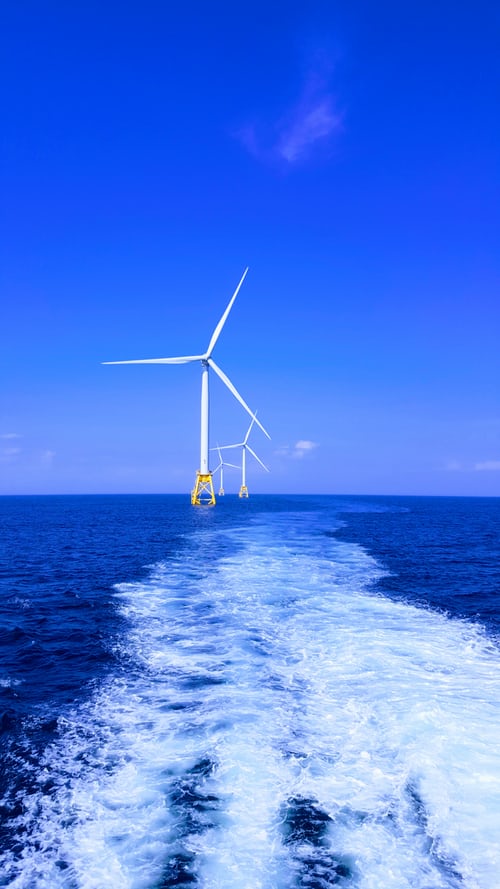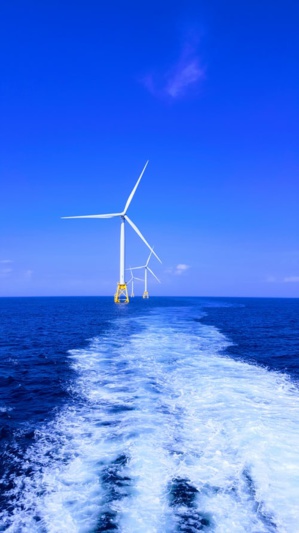As per the International Energy Agency, offshore wind could be the foundation the world was looking as renewable energy source.
It is crucial to reach the target of “limiting temperature rise” under two degrees Celsius in this century with global consent while “replacing fossil fuel” with renewable energy. Offshore wind energy can, in fact, help us to “avoid 5-7 billion tonnes of CO2 emissions from the power sector globally, reported IEA.
At present, only three percent of the global power generation is sourced from “wind turbines at sea”. While, the Executive Director of IEA, Fatih Birol said:
“(But) the potential is huge”.
Taking into account the present as well as “proposed policies”, one can say that the offshore wind turbines capacities are likely to grow fifteen times in the coming twenty years whereby creating a “$1-trillion business”. As per Birol the offshore wind energy generation is like “the shale revolution and the rise of solar PV” which holds the capacity to change the energy system by steep cost reduction.
Birol thinks that within a span of the coming five years, globally average offshore wind generation cost will drop by fifty percent, as bigger turbines, some “almost as high as the Eiffel tower”, are going to be introduced.
Furthermore Reuters reported:
“In Europe, offshore wind will soon beat new natural gas-fired capacity on cost and be on a par with solar photovoltaics (PV) and onshore wind while in China, it is set to become competitive with new coal-fired capacity around 2030, according to the IEA”.
Nevertheless, Birol also pointed out that this offshore movement needs to be backed by large infrastructure investment in onshore grid and “real political action”. In his words:
“If the governments are serious about their climate policies and climate neutrality they have to have dedicated policies in order to foster green technologies like offshore wind”.
Even though, the transition to green energy is gaining pace and finding its way to political agenda across the globe, we can see a disparity between “climate ambitions and real-life emissions trends” for we witnessed a “historic high” in CO2 emission levels last year.
At present, U.K. is holds the “biggest capacity” to produce offshore wind energy, although by 2025 or so China is likely to take over, while Japan, the U.S. and Taiwan sees a growing industry for the same.
References:
reuters.com
It is crucial to reach the target of “limiting temperature rise” under two degrees Celsius in this century with global consent while “replacing fossil fuel” with renewable energy. Offshore wind energy can, in fact, help us to “avoid 5-7 billion tonnes of CO2 emissions from the power sector globally, reported IEA.
At present, only three percent of the global power generation is sourced from “wind turbines at sea”. While, the Executive Director of IEA, Fatih Birol said:
“(But) the potential is huge”.
Taking into account the present as well as “proposed policies”, one can say that the offshore wind turbines capacities are likely to grow fifteen times in the coming twenty years whereby creating a “$1-trillion business”. As per Birol the offshore wind energy generation is like “the shale revolution and the rise of solar PV” which holds the capacity to change the energy system by steep cost reduction.
Birol thinks that within a span of the coming five years, globally average offshore wind generation cost will drop by fifty percent, as bigger turbines, some “almost as high as the Eiffel tower”, are going to be introduced.
Furthermore Reuters reported:
“In Europe, offshore wind will soon beat new natural gas-fired capacity on cost and be on a par with solar photovoltaics (PV) and onshore wind while in China, it is set to become competitive with new coal-fired capacity around 2030, according to the IEA”.
Nevertheless, Birol also pointed out that this offshore movement needs to be backed by large infrastructure investment in onshore grid and “real political action”. In his words:
“If the governments are serious about their climate policies and climate neutrality they have to have dedicated policies in order to foster green technologies like offshore wind”.
Even though, the transition to green energy is gaining pace and finding its way to political agenda across the globe, we can see a disparity between “climate ambitions and real-life emissions trends” for we witnessed a “historic high” in CO2 emission levels last year.
At present, U.K. is holds the “biggest capacity” to produce offshore wind energy, although by 2025 or so China is likely to take over, while Japan, the U.S. and Taiwan sees a growing industry for the same.
References:
reuters.com






